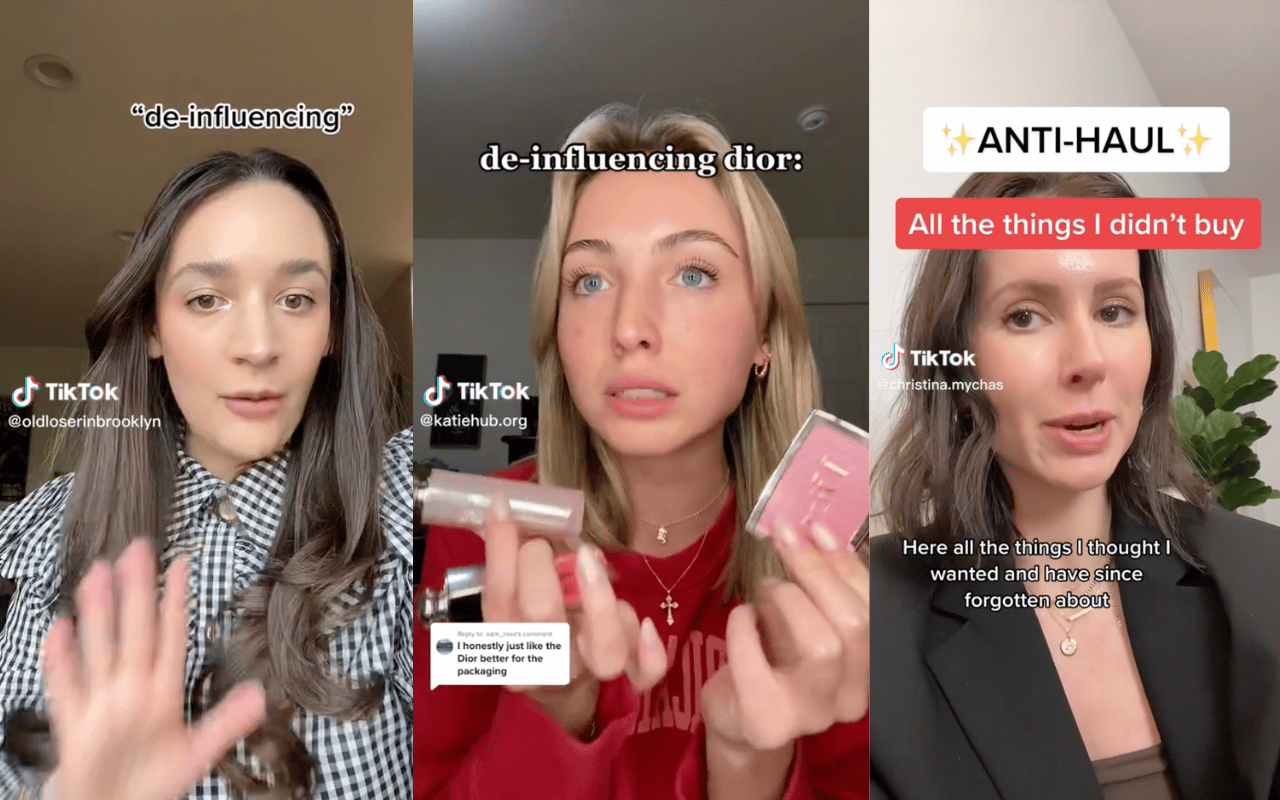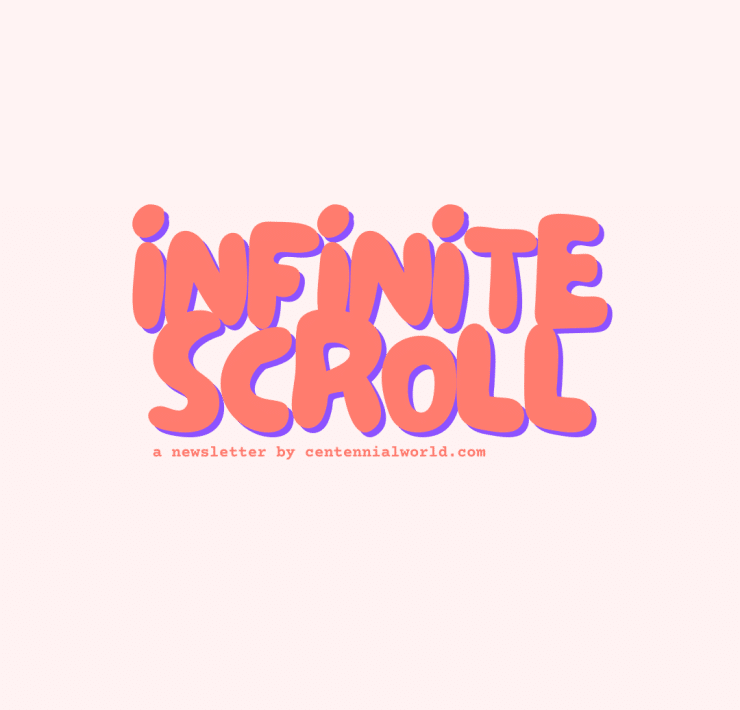
De-influencing is TikTok’s latest trend that promises to make a positive impact on our wallets. But the future of this trend and its long-term staying power is questionable at best.
Under the hashtag #deinfluencing (which has a whopping 60.4 million views at the time of writing), creators are flipping the script and sharing what viral products you shouldn’t buy.
The trend is in direct response to the over-consumption culture that is rampant on TikTok. Instead of sending consumers to an Amazon Storefront, creators on the app are now promoting an intentional approach to shopping, sharing what cult products they regret buying (whilst more than often dragging the brands).
@katiehub.org Replying to @.sam_ross THIS MIGHT BE A HOT TAKE HAHA #fyp #deinfluencing #dior
♬ original sound – katie
Products that have come under fire include the Dior blushes and lip oils, Olaplex shampoo and conditioners, Charlotte Tilbury’s makeup products, AirPods Max, Drunk Elephant skincare and the list goes on. Basically, no one is safe.
In a video about de-influencing, trend analyst creator @oldloserinbrooklyn AKA Mandy Lee says that in her opinion, “de-influencing is more about facilitating a conversation. If I can help sell an idea, a theory, a behaviour that’s going to help somebody be a more conscious shopper or understand fashion better to have the tools to arm themselves with knowledge.”
@oldloserinbrooklyn De-influencing, anti haul, and revisiting a trend forecast. “De influencing” to me is about arming folks with knowledge, and trying to facilitate conversation, ideas and critical thinking when it comes to personal style, consumption, cultural context, and fashion trends. #deinfluencing #antihaul #fashion #beautyindustry #fashiontrends #trendcycle
♬ original sound – Mandy Lee
While she hopes that this trend is here to stay, Mandy also points out that we have seen this conversation before, especially in times of economic uncertainty like an impending recession.
Examples of similar trends include ‘what I left in my online shopping cart’ which emerged in 2020 at the height of the pandemic, and ‘anti-haul’ content that took over the YouTube beauty space through the late 2010s and re-emerged on TikTok in 2021.
@christina.mychas Anti-haul! All the things I thought I wanted and have since forgetting about. I put things I want on a Wishlist, create some distance, and the review later. Most things I forget I even wanted, so it becomes easy to cross that item off and save the money AND the buyers remorse #antihaul #thingsiregretbuying #buyersremorsemuch #impulsebuying #lowbuy2023 #greenscreen
♬ Monkeys Spinning Monkeys – Kevin MacLeod & Kevin The Monkey
Sara McCord, a marketing strategist and creator, agrees that de-influencing likely won’t last, despite its relevancy at the moment in the face of overconsumption, a cost of living crisis, and environmental disasters. “The most successful marketing trends, the ones that have the most staying power, are the ones that we feel like make the most sense within our daily life,” she said in a TikTok video.
McCord points out that de-influencing as a trend is actually quite negative, with instructions on what not to buy without providing a solution. This can actually be a poor use of time for those looking for product recommendations, which is, unsurprisingly, a huge reason people use social media.
She suggests this trend is “reactive and not proactive,” and for that reason, it will probably not last for very long. When a trend is reactive, McCord says “it really only has the moment in the space of what it’s reacting to go viral” and at the moment, sentiment towards influencers is overwhelmingly negative. But as this sentiment inevitably comes back around, we’ll be to looking to influencers to help guide our next purchase again— a shift that’s already begun.
@sarajmccord #deinfluencing is not here to stay beyond this initial moment and these are all the #marketingstrategy reasons why #influencers #influencermarketing
♬ Bejeweled – Taylor Swift
After just a few short weeks of popularity, the de-influencing trend has already evolved, giving way to more consumption as creators are now suggesting less expensive or more effective alternatives — influencing audiences to go out and buy ‘better’ products that are often in line with fast fashion and cheap beauty dupes.
As consumers become more judicious with their spending during these tough economical times, it’s unsurprising that many are rejecting capitalism (in theory).
However, based on the history of cyclical trends online, it’s unlikely that de-influencing will save the planet or eradicate our culture of over-consumption. So while this may just be another TikTok trend taking over the FYP, there is value in the conversations it’s facilitating about purchasing habits and wastefulness.
And it’s these conversations that could lead to long-term impact from this fleeting micro-trend.

